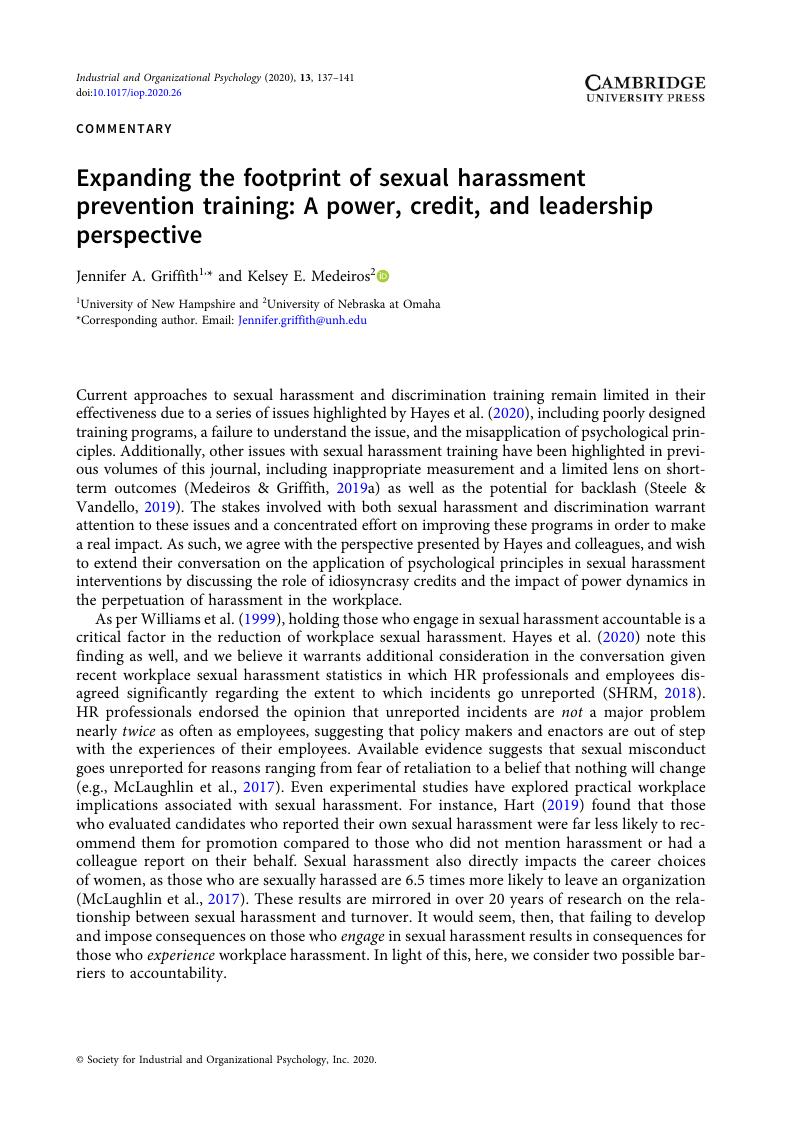Feldblum, C., &
Lipnic, V. (
2016). EEOC Select Task Force on the Study of Harassment in the Workplace, report of Co-Chairs Chai R. Feldblum and Victoria A. Lipnic. Retrieved from
https://www.eeoc.gov/eeoc/task_force/harassment/report.cfmGoogle Scholar 